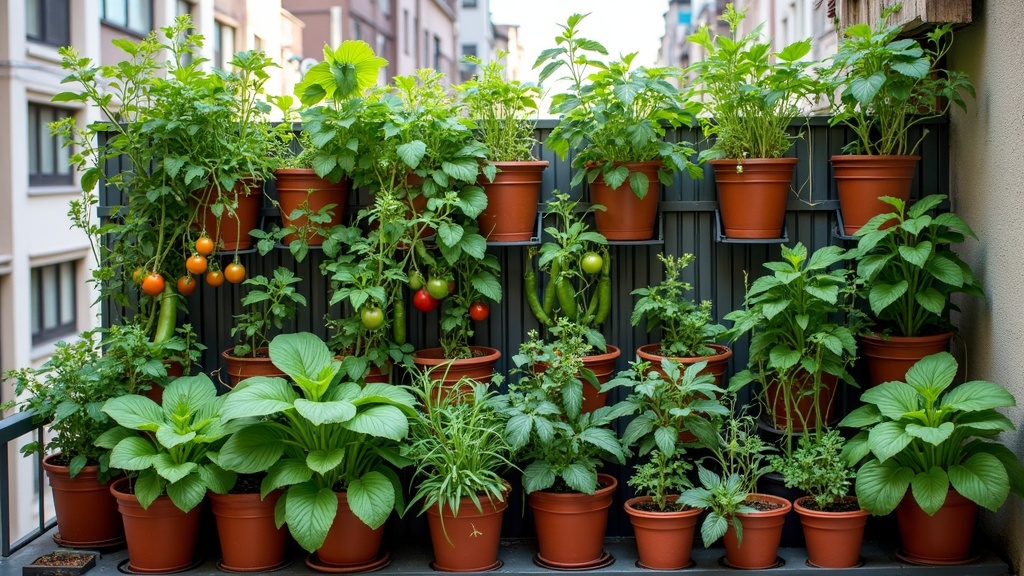Vertical gardening is a smart way to grow your own vegetables, even if you’re working with limited space. I’ve found it to be super useful, whether you have a tiny patio, a balcony, or just a little spot in your backyard. You don’t need a huge yard to harvest fresh cucumbers, tomatoes, or lettuce. You just need a bit of creativity and some vertical space. Here’s how to make the most out of every square foot and get healthy veggies growing up, not just out.

Getting Familiar With Vertical Gardening
Vertical gardening has really changed the way people think about growing food at home. Instead of feeling boxed in by small yards or city apartments, you can use walls, fences, or even railings to grow upwards. The basic idea is to stack or hang plants so that multiple layers can fit in the same little patch of land. This is perfect for anyone who wants a kitchen garden but doesn’t want it taking over their living space.
The vertical gardening approach isn’t new. People have been training beans up poles and tying tomatoes to stakes for ages. What’s different now is the variety of structures, planters, and supports you can use. There are options made from wood, metal, plastic, or even items you might have around the house, like old ladders or shoe organizers. These setups also make harvesting and caring for your plants a lot easier, and you won’t be constantly stooping or kneeling.
The Benefits Of Growing Veggies Vertically
Getting into vertical gardening unlocks a ton of perks. First, you’re using space that usually gets ignored: walls, balconies, even the sides of sheds. When veggies grow vertically, more sunlight can reach every leaf and fruit. This keeps plants happier and helps cut down on diseases linked to damp, crowded soil.
Vertical gardens can also help keep your harvests cleaner since the leaves and fruit don’t touch the ground as much. This makes them less tempting to slugs and other pests. There’s better airflow, so you don’t get as many troubles with mold or blight. I’ve noticed that it even makes watering a bit more efficient since you can set up drip systems or use gravity to your advantage.
Plus, vertical gardening adds greenery to places you wouldn’t expect, making patios and fences look more alive. It’s easy to keep things organized, and harvesting is a breeze when everything’s at eye level. If you want to make a small space more eye-catching, a wall of fresh greens or colorful veggies really makes any area pop.
Choosing The Right Plants For Small Space Vertical Gardening
Not every vegetable loves to grow up instead of out, but lots do just fine. Here’s a shortlist I usually recommend to start with:
- Tomatoes: Both small cherry varieties and bigger types will climb nicely with the right support.
- Cucumbers: Especially the smaller bush or pickling varieties, which don’t get as heavy as slicing types.
- Beans and Peas: Pole beans and climbing peas are almost designed for vertical setups.
- Leafy Greens: Lettuces and spinach work well in stacked planters or wall systems.
- Squash and Zucchini: Choose compact or vining types and make sure they have strong supports.
- Herbs: Basil, parsley, and mint are perfect for pocket planters or wall baskets.
Root veggies (like carrots or beets) are a bit trickier since they need depth. However, you can track down tower planters made specifically for them, so don’t be afraid to experiment.
Building Your Vertical Garden Structure
Most small space gardeners start with one of these setups:
- Wall Planters: Modular or pocket planters hang on any fence or wall, and can grow herbs or lettuce easily.
- Trellises And Stakes: These are classic for beans, peas, tomatoes, and even cucumbers. They keep plants upright and organized.
- Pallet Gardens: Upcycled wooden pallets can be mounted on a wall or leaned against a fence and filled with soil and plants.
- Tower Gardens: These tiered planters stack vertically, giving you multiple layers for growing veggies and herbs.
- Hanging Baskets: Good for strawberries, compact tomatoes, or leafy greens.
Starting small is your best bet. Pick one or two structures, plant a handful of crops, and see what works in your space. As you learn what grows well, you can mix in some variety by adding more layers or expanding your setup over time.
Step by Step: Starting Your Vertical Veggie Garden
Putting together a vertical garden isn’t much more complicated than a regular garden, but there are a few extra things to keep in mind. Here’s a road map I found handy:
- Pick The Perfect Spot: Most veggies need at least 6 hours of sunlight daily. South or west-facing walls work best. Make sure you have access to water and the structure is sturdy enough to hold your containers or trellises.
- Choose Your Support: Pick a trellis, pallet, stacked pots, or wall planter system based on the plants you want and the space you’ve got.
- Use Good Quality Potting Mix: Light potting soil blended with compost works best for most containers. Avoid using heavy garden soil, which can get compacted and stay wet too long.
- Plant Wisely: Place taller or heavier crops like tomatoes or squash at the bottom or where the structure is strongest. Lighter crops like lettuce or herbs can fit in the upper sections or pockets.
- Water Regularly: Vertical gardens can dry out more quickly, so keep an eye on moisture. Drip irrigation or selfwatering planters make life much easier and keep roots happy.
- Fertilize As Needed: Because water runs through these planters faster, nutrients can disappear quickly. A slow-release fertilizer or fish emulsion every couple of weeks keeps veggies growing strong.
This process helps make sure your small space garden is set up for a real harvest, not just a few leafy greens. Take time to adjust your approach as seasons change or your plant choices expand.
Common Challenges And Practical Solutions
Every garden technique has its hiccups. Vertical gardening is no different. Some common things I run into include:
- Drying Out: Hanging planters and wall gardens can lose moisture fast. Adding a layer of mulch to the soil and using selfwatering pots keeps roots from getting crispy. A drip system, if you can set one up, is pretty handy for steady moisture.
- Weight Issues: Wet soil and maturing veggies add up in weight. Always anchor your structure securely and check weight limits, especially on balconies or older fences.
- Access To Sunlight: On patios or balconies with shade, pick greens or herbs that can tolerate partial sun. If you have only a north-facing wall, try growing lettuce, chives, or mint.
- Overcrowding: It’s tempting to pack as many plants as possible, but give veggies enough room or you’ll end up with stunted harvests. Most seed packets list spacing recommendations. Stick to those even in vertical planters.
By planning around these challenges, you’ll keep your garden healthier and your workload lighter. Flexibility is key—be ready to move plants or adjust watering.
Advanced Tips to Boost Your Vertical Garden’s Success
Once your system is up and running, there are a few extra tricks I’ve found helpful for top-notch harvests:
Rotate Your Crops: Switch up what you plant in each section every year. Crop rotation keeps pests guessing and supports healthier soil long term.
Interplant Smartly: Mix fast growers, like radishes or lettuce, with slower climbers such as beans or tomatoes. The quick crops will be ready to pick early, freeing up more space as the slower plants take over. Try colorful salad greens with peas for a fresh look.
Train Your Vines: Check on your plants often and gently tie them to their supports as they grow. Soft ties or strips of old t-shirts work well and won’t damage stems. Training plants upward helps avoid tangles and improves air flow.
Try Companion Planting: Certain plant pairs support each other. For example, peas help add nitrogen to the soil for leafy greens planted below them. Basil grows well underneath tomatoes and helps keep some pests away. Mint can be placed in planters by itself to avoid overwhelming its neighbors.
Feed Your Soil: Add compost or worm castings periodically to keep soil life active and replenish nutrients. Healthy soil leads to tastier, more robust veggies and helps prevent issues like blossom end rot or yellowing leaves.
Frequently Asked Questions: Small Space Veggie Gardens
These are some common questions folks ask when starting out:
How often should I water a vertical garden?
Smaller, raised planters dry out more quickly than ground beds, so check moisture daily at first. Most setups need water every day or two during summer months, especially if you’re growing in full sun.
Is it OK to use recycled containers in vertical setups?
Absolutely! Just make sure any container you use has good drainage holes and hasn’t stored chemicals or anything toxic in the past. Old buckets, food-safe bins, and even fabric grow bags can work.
Can root vegetables be grown vertically?
While most vertical systems work best for things that grow above ground, some extra deep tower planters are made for carrots, radishes, and beets. Stick with smaller varieties for better results and don’t crowd seedlings in each pocket.
How do I keep pests away in small, vertical spaces?
Vertical growing helps by keeping plants off the ground. For extra protection, encourage natural predators (like ladybugs), use floating row covers, or try simple soap-and-water sprays for smaller bug problems. Keep plants trimmed for airflow, and don’t forget to check leaves for eggs or caterpillars regularly.
Starting Your Vertical Veggie Patch
Growing vegetables vertically in a small space is totally doable and pretty rewarding. You get fresh salads, save space and water, and add loads of greenery to your home. The main thing is to experiment, pay attention to what your plants need, and adjust your setup as you go. With a little effort and a willingness to try new ideas, you’ll be picking homegrown veggies from your wall or balcony in no time. And remember part of the fun is trying different plants or structures every season. Your space might be small, but your garden adventure can grow in plenty of directions, all the way up.
